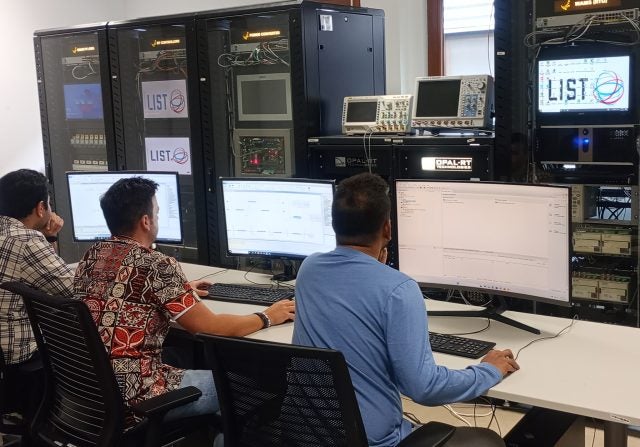Schneider Electric validates multi-unit harmonic filter control with OPAL-RT HIL simulation
Schneider Electric
Energy
05 / 25 / 2021

The company
Schneider Electric is a global specialist in energy management and automation, developing technologies that ensure safe, reliable, and efficient power for industrial, commercial, and residential systems. Based in Portland, Oregon, Schneider Electric’s AccuSine® PCS+ and PCSn product lines are designed to actively mitigate harmonics and improve power quality in electrical systems—particularly within commercial buildings and light industrial applications—while ensuring compliance with grid standards like IEEE-519 and IEEE-1547.
The challenges
Schneider Electric’s Active Harmonic Filter (AHF) products had to be validated for a wide range of demanding use cases—ranging from global 50 Hz and 60 Hz grids, to multiple stacked-unit configurations (up to 8 in parallel), varying grid impedances, and both balanced and unbalanced loads. These conditions presented complex harmonic environments that could impact product performance, particularly during rapid changes in reactive power demand. Traditional testing at the factory transformer was limited by hardware constraints, frequency mismatch, and a lack of scalable load simulation. Additionally, accurately simulating 8 parallel 300-amp units—capable of injecting up to 2400A—posed a significant control and validation challenge.
The OPAL-RT solution
OPAL-RT provided a high-performance hardware-in-the-loop (HIL) system built on the OP5707 simulator and eHSx128 FPGA-based solver, with additional support from an OP5607 expansion chassis. This setup allowed Schneider to run real-time simulations of eight PCS+ or PCSn units in parallel, using only a single physical decoupling point to maintain system stability. The solution supported simulation of full 3-phase distribution systems, harmonic injection, converter dynamics, and control-communication behavior across multiple units. OPAL-RT’s ability to simulate converters without excessive decoupling enabled high-fidelity testing of fault scenarios, load behavior, and proprietary synchronization protocols between units. Control algorithms and firmware could be developed and validated ahead of hardware availability—accelerating R&D timelines and enabling extensive pre-deployment testing.
With HIL, one of the biggest advantages is being able to test the actual product. We can simulate all sorts of use cases: 50 Hz grids, multiple stacked units, different grid impedances, balanced and unbalanced loads–all kinds of situations.
John Batch
Firmware Engineer at Schneider Electric
The results
The HIL system has become a core development and validation tool for Schneider’s power quality solutions. It allowed their engineering team to:
-
Simulate full 8-unit configurations under variable grid conditions, including weak grids and harmonic disturbances
-
Detect and resolve field-level customer issues by recreating problematic harmonic scenarios
-
Validate control performance across global grid frequencies before deploying hardware internationally
-
Test firmware stability and tuning with precision, improving confidence during site commissioning
-
Start product development before physical hardware was available, accelerating innovation cycles
The system also enabled Schneider to move beyond basic functionality checks and focus on real performance improvements during field trials.



